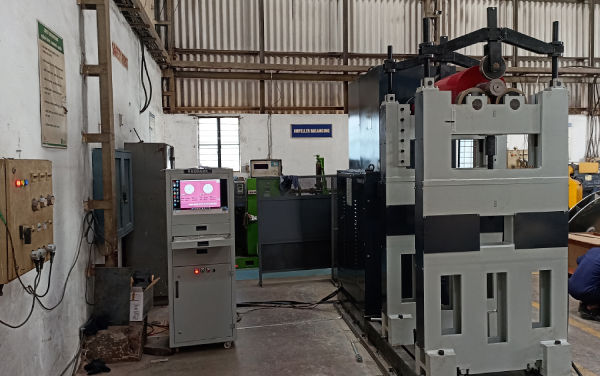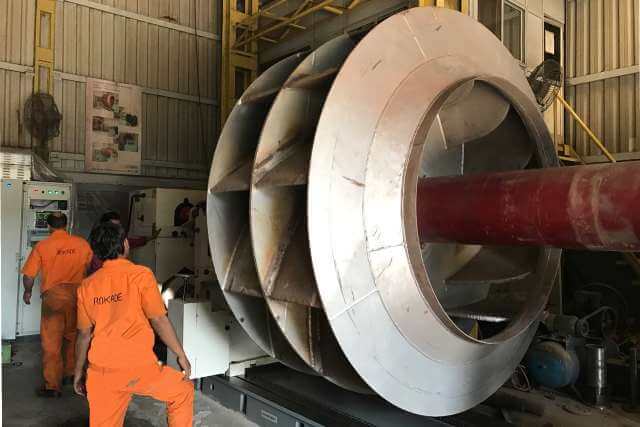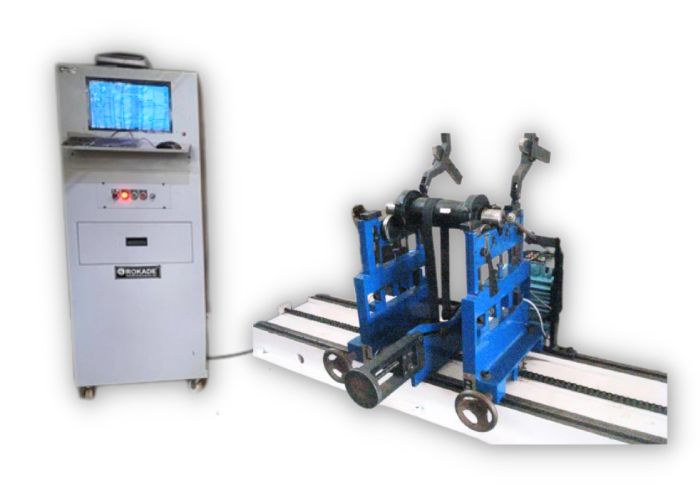Hard Bearing vs Soft Bearing Balancing Machines
Soft Bearing Balancing Machine
The soft bearing machine derives its name from the fact that its supports are free to move (soft) in at least one direction, usually horizontally or perpendicularly to the rotor axis. The theory behind this style of balancing is simple: the rotor essentially behaves as if suspended in mid-air while the movements of the rotor are measured with vibration sensors to determine the unbalance of the rotor. The mechanical design of a soft bearing machine is slightly more complex, but the electronics involved are relatively simple compared to the hard bearing machines.

Advantages and Disadvantages of Soft Bearing Balancing Machines
Cost:
If you're in a low volume/high rotor variety operation (such as maintenance or service), soft bearing balancing would be the most cost-effective choice for you because these types of balancers don't require a specialized foundation or an ISO-calibrated testing rotor to perform a balancing test.
Transportability:
The design of the soft bearing balancing machine allows for it to be placed almost anywhere, as the flexible work supports provide a natural isolation from nearby activity. This also allows for the machine to be moved without affecting the calibration of the device, unlike the hard bearing machines. This type of balancer would is well suited for anyone needing the option to relocate their equipment to perform onsite at a customer's location.
Versatility:
An advantage to a soft bearing machine is the inherent versatility due to the modular machine design.With available options to change suspensions and rollers to address differing rotor and journal sizes, one machine can handle an expanded range of rotors.
Time:
Soft bearing machines utilize the trial weight method, which means that an initial baseline is established for each rotor through a process of adding a known weight to each balancing plane before performing the balancing run.Therefore, the soft bearing machine is developing a balancing solution to a known response of the rotor.
Hard bearing machines are calibrated against an ISO test rotor, so that the response of the pedestals to a rotor is developed ahead of time. This allows a hardbearing machine to perform a balancing run without the requirement of trial weights. Hardbearing machines have a minimum of one run versus a soft bearing machine's three runs.
The soft bearing trial weight requirement can be mitigated with the addition of one run calibrators, which perform the trial weight runs automatically, and the retains the trial weight run in the software database.
Balancing Specs:
Typically balance specifications are selected from the balancing instrument software to confirm compliance, so both hardbearing and soft bearing machines can meet all specifications.
Run Speed:
Soft bearing machines have full sensitivity of the entire range of speeds, which means that the measured displacement sensitivity does not change due to the speed of the rotor. Hard bearing machines, due to their rigid design, typically require higher rotor speeds to achieve the required sensitivity as compared to soft bearing machines.Therefore, soft bearing machines can typically balance rotors at lower and safer speeds.
Handling Large Initial Unbalance:
Due to the pendulum design of soft bearing machines, rotors with large initial unbalance can require additional balancing techniques, such as static balancing and locking the pedestals to restrict the motion, to be employed in the balancing process. Hard bearing machines, due to their rigid construction, typically can handle the large initial unbalance rotor applications without any additional balancing operations needed.
Rotor Bearing Supports:
Another inherent advantage with soft bearing machines is the self-aligning design of the roller work supports.Utilizing the gimbal action allows the rollers to rotate into position as needed to align the rotor between the pedestals.This allows the soft bearing machine to utilize flat rollers to minimize damage to the rotor journals. Hard bearing machines, being rigid in construction, do not include this self-aligning feature and typically compensate with crowned rollers which reduce the roller-to-journal surface contact, creating a higher possibility of journal damage over time.
Hard Bearing Balancing Machine

Hard bearing balancing machines have stiff work supports (hard) and rely on vibration to interpret the unbalance in a rotor. This requires a massive, stiff foundation for the machines to be permanently set and calibrated in place by the manufacturer. The theory behind this balancing system is that the rotor is fully constrained and the forces that the rotor puts on the supports are measured.Background vibration from adjacent machines or activity on the work floor can affect balancing results. Commonly, hard bearing balancing machines are used in manufacturing production operations where a fast cycle time is required.
Advantages and Disadvantages of Hard Bearing Balancing Machines:
Cost:
While both soft and hard bearing machines are similar in cost, foundation requirements for hard bearing machines can add significant cost to the project.
Transportability:
Because of the foundation requirements, hard bearing machines can be expensive to relocate, whereas soft bearing machines only require a level surface that can hold the combined weight of the rotor and machine.
Versatility:
Hard bearing machines typically are used to balance similar rotors since changes to the pedestal/rollers can require additional setup requirements.Soft bearing machines, with the trial weight method, are self-calibrating to each rotor, providing additional versatility in the applications that can be addressed.
Time:
Hard bearing machines can provide a faster balancing solution due to not using the trial weight method. This can be a useful advantage in designing production balancing solutions with high volume, part-processing requirements.
Balancing Specs:
Both hard bearing and soft bearing machines typically meet all balance specifications. These specifications are selected from the balancing instrument software to confirm compliance.
Run Speed:
A limiting factor to hard bearing machines is the required balancing speed of the rotor during testing. Because the machine measures unbalance force of the rotating rotor, the rotor must be spun at a high speed to generate enough force to be detected by the rigid pedestal.
Handling Large Initial Unbalance:
Because there are no moving suspensions in the hard bearing machine, this type of machine can typically handle large initial unbalance rotors without any additional balancing techniques being employed.
Rotor Bearing Supports:
To address rotor alignment, the hard bearing machine uses a narrow, crowned roller as opposed to the wide, flat rollers used in soft bearing machines.This is because the rigid construction of the hard bearing machine does not allow the rollers to rotate as needed to align with the rotor.





